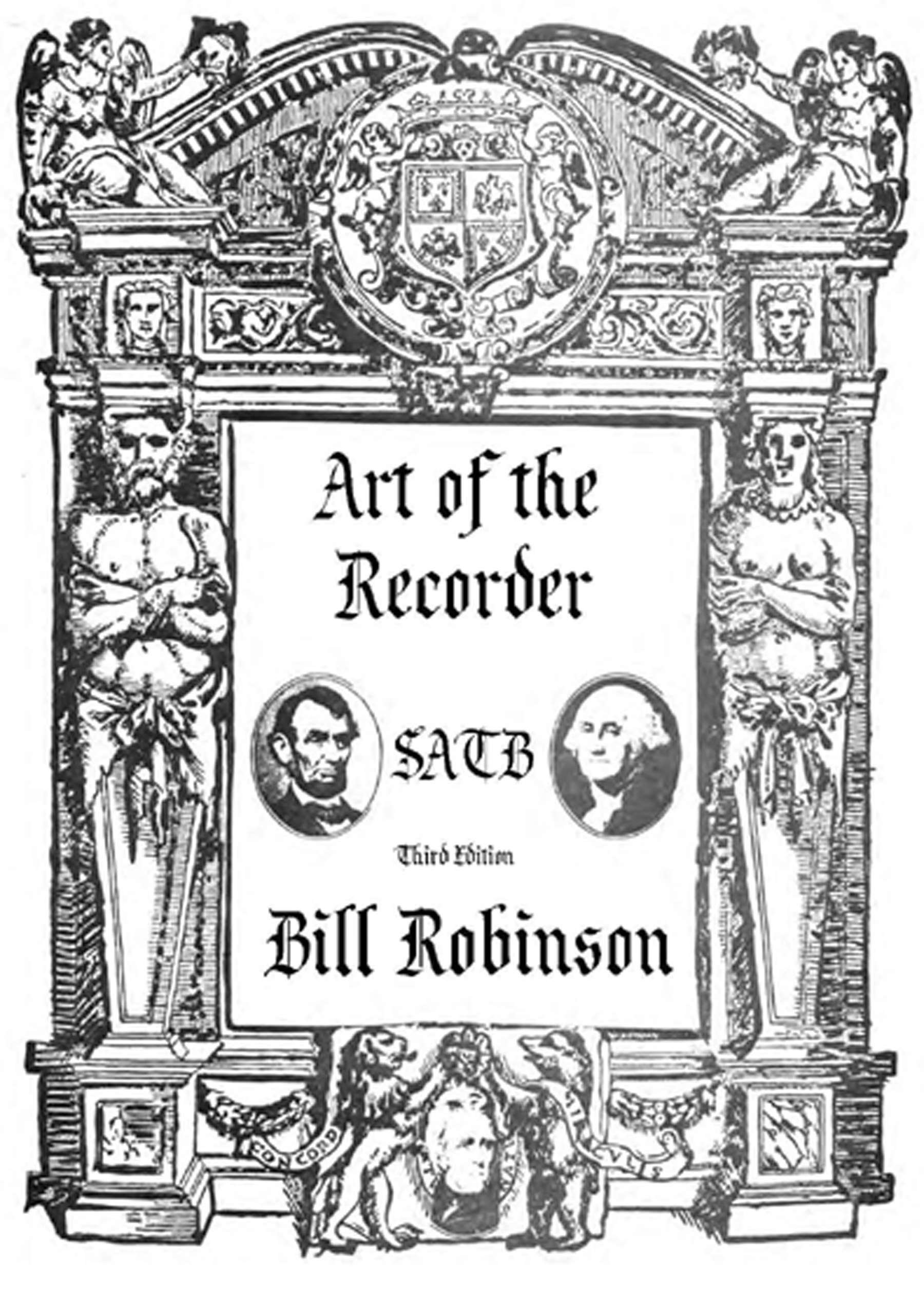




The parts and scores are letter size and suited for either paper printing or electronic music readers.
(for a good recording, see Art of the Violin under Music for Strings;
the synthesis below is of recorders.)
Synth MP3 recording Synth WAV recording
In 1975 I wrote a
recorder quartet for my father, Heber Robinson, who was an enthusiastic
recorder player with a group at the local Unitarian-Universalist Church in
Peabody, Massachusetts. However, the work was too contemporary for the other
performers, and the piece was never played.
In
hopes of finding other performance opportunities, I wrote a large number of
arrangements for other instruments; Art of the Violin, Art of the Flute, Art
of the Double Reed, and Art of the Saxophone. However none found a
happy home. (Part of the gag—forgive me for explaining a joke—was that this was
an experiment in music that could be played by any instruments that fit the
range, after suitable transposition and modification of phrasing or bowing. So
it really isn’t the Art of any specific Instrument.)
In
2004 I decided that the piece must be at fault, and I rewrote the first and
last movements from scratch, keeping nothing from the originals. I made new
arrangements for four flutes and four violins as before. Performers continued
to shy away; the middle movement was one of the most atonal I had ever written,
slow and very short (only one minute) and titled “So You Think I’m Too
Old-Fashioned”. No one liked it, and I saw that it needed revision.
On
February 4, 2013, a fine local violinist, Izabela Spiewak, who had played on
the memorial concert for my sister in 2010, died of leukemia. I wrote this new
middle movement as an elegy in her memory. Now the whole piece is tuneful,
gentle, and easily appreciated by many ears. Someday its day may come.
Storytelling,
passion, sorrow, drama, fireworks -- this full-length concert quartet for SATB
has it all! Each of the three movements has an exciting unique character with
action in all the parts. The composer lists it as “challenging” and that is an
accurate description, with plenty of accidentals, tight ensemble, melancholy
and joy using the full range of each instrument. The open key signature allows
the tonal center to meander without ever settling on any one in particular or
for very long. The first movement “Just for Fun” is curiously marked
“Root’n toot’n” and is almost a Bach-like study in melodic development and
interplay, full of overlapping dotted rhythms and rapid little Baroque-style
turns around main notes. In the Adagio second movement, “Elegy for Izabela”,
a simple melodic motive up and down a 4th returns again and again, threading
through long, slow chords full of rich emotion. Finally the third movement “An
Original Traditional Melody” is a rollicking jig marked “Allegro piccolo
jigolo”. The fine weaving and quick tempo in this movement makes it the most
challenging of the three to put together. For adventurous players, this piece
is worth the rehearsal time required to bring it to the stage.
-- Glen Shannon